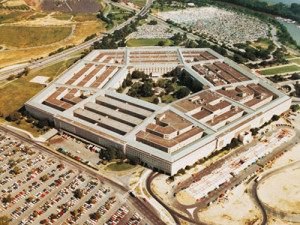
DoD’s ‘third offset’ includes many small bets, willingness to fail
Gen. Paul Selva, the vice chairman of the Joint Chiefs of Staff, said DoD must accept more risk in its funding of new technologies. Topics of interest include b...
The Pentagon’s strategy to overcome the technological dominance that its officials say is rapidly shrinking will be based on a large series of small bets – and it’s at least possible that none of them will pay off, DoD’s number-two uniformed officer said Thursday.
Gen. Paul Selva, the vice chairman of the Joint Chiefs of Staff, said DoD’s third offset strategy differs from the prior “offsets” in the 20th century (the development of tactical nuclear weapons and precision-strike capabilities) in that it will lean heavily on commercial technologies instead of Defense-unique ones. The innovative bits, the department hopes, will involve integrating those technologies into warfare more intelligently and more quickly than any potential enemy.
“The question we’re trying to pose now is whether the technologies that are being developed in the commercial sector provide the kind of force multiplier we got when we combined tactical nuclear weapons or precision and stealth with fielded formations, and if the answer is yes, then we can change the way we fight,” he told the Brookings Institution. “And if the answer is no, then the third offset will never come to pass and we’re going to have to figure out how to do what we’re doing now just a little bit better. But we think history tells us that there’s at least the potential that by changing the way we organize around the technologies that are available, we might be able to change the pace and scope of the fight in the battlespace.”
To test that premise, Selva said DoD needs to make itself much more accepting of technological failure than it’s historically been. To that end, he said the department has devoted a small pool of money — he wouldn’t disclose a dollar amount — to fund the kinds of technologies the military is currently interested in, including teaming between machines and humans, artificial intelligence and the exploitation of big data.
“To a software engineer that’s enticed by big data, what better place to put them than in some of the largest databases the world has to offer? Let’s let them swim around in our data and help us understand how to make better use of it,” he said. “We’ve entered into some of those arrangements. They live on the fringes of acquisition reform initiatives that were put into place in last year’s defense authorization bill, but they’re very, very useful.”
Selva, who has a role in directing the fund’s spending, said he’s extremely willing to place bets that don’t pan out, as long as they’re during the early development of new technologies and not on the construction of large, expensive systems.
“That’s really tough for most military people to take on,” he said. “Civilian venture capitalists deal with this all the time. They’ll place 300 bets in a year and expect one of them to take off. Traditionally, we place a handful of bets in a year and expect all of them to pay off. In this environment of rapid innovation, we have to be willing to accept failure. Not in the battlespace, but in the development phase.”
If carried out, that attitude would put DoD on the same page as the leaders of the House and Senate Armed Services committees, who have signaled that their reform plans for the coming year include legislation that would encourage more rapid prototyping and more acceptance of risk in weapons systems’ early development stages.
Asked which developments might matter most on the way to an eventual third offset, Selva said DoD is interested in three broad categories of technology at the moment: energy production and storage, “lethal endgame” systems that can accurately direct weapons toward more complicated targets and software and control technologies that guide those systems.
“I put those three things together because they’re all about feedback loops,” he said. “How do you get the things you build to do the things you want them to do? Energy production and storage is actually moving faster in the commercial sector than it is in the military space. Witness companies like Tesla. Innovation moves faster in the commercial sector than in Defense by a large margin. If you look at the net area under the curve of change in the civilian world compared to the military world over time, they’re about the same. The difference is we want to completely change the way we prosecute warfare. In the civilian sector, innovation is the sum of a thousand little changes that are happening all the time. Lethal endgame technologies are always going to be military-unique, but we’re going to have to take advantage of all of it.”
Copyright © 2024 Federal News Network. All rights reserved. This website is not intended for users located within the European Economic Area.
Jared Serbu is deputy editor of Federal News Network and reports on the Defense Department’s contracting, legislative, workforce and IT issues.
Follow @jserbuWFED





